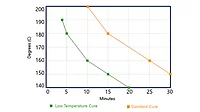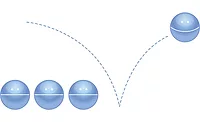OFF THE RECORD: The Powder Coating Pricing Conundrum
Why is it so hard for suppliers to make a profit in the powder coating industry, and what long-term effect will this situation have on finishing professionals? A few suppliers shared their views “off the record.”
 A concerned reader recently wrote to Finishing Today describing the following issue: “I would like to see an article on powder coatings raw material price increases. Finishing operations are holding their powder suppliers to low margins, while prices for raw materials continue to rise. Over the past year, prices for epoxy resins have risen more than 60%, prices for TiO2 have gone up over 10%, and prices for other raw materials are also higher. Powder coatings most certainly add value to any finisher’s operation. They’re efficient, environmentally friendly, high quality and cost effective. In addition, powder manufacturers have made great strides in optimizing their manufacturing processes. So why must they endure unacceptable profit margins?”
A concerned reader recently wrote to Finishing Today describing the following issue: “I would like to see an article on powder coatings raw material price increases. Finishing operations are holding their powder suppliers to low margins, while prices for raw materials continue to rise. Over the past year, prices for epoxy resins have risen more than 60%, prices for TiO2 have gone up over 10%, and prices for other raw materials are also higher. Powder coatings most certainly add value to any finisher’s operation. They’re efficient, environmentally friendly, high quality and cost effective. In addition, powder manufacturers have made great strides in optimizing their manufacturing processes. So why must they endure unacceptable profit margins?”
This is probably the most perplexing issue facing the powder industry today. It’s a difficult situation, and it doesn’t seem to be getting any better.
The staff of Finishing Today queried a number of powder coating suppliers to get their perspectives on this problem. All were forthcoming, but none wanted to be directly quoted. We feel that this issue is pertinent to the finishing professional and are therefore presenting the discussion without using the names of the industry experts interviewed.
Mr. L, the owner of a medium-sized powder producer, describes the problem he faces: “For the past five years, we have been held hostage by unrelenting raw material price increases while the market continues to demand lower powder prices. Our profit margins used to be healthy; now we’re faced with accepting lower than reasonable margins just to keep our existing customers.”
Mr. B, a strategic business manager from a multi-national powder maker, recognizes the problem from a more global perspective: “Something has got to give. What I foresee is a contraction in the number of powder coating suppliers, both in the U.S. and abroad. I know that our European colleagues have been dealing with reduced profit margins longer than we have. They have coped by consolidating plants, moving production to lower labor cost regions and optimizing their manufacturing processes. The same is gradually occurring in North America, albeit at a slower pace.”
Ms. G, the national sales manager for a company that produces both industrial paints and powder coatings, offers her perspective: “I think that the biggest problems the powder industry is facing are a commoditization of our products, coupled with a serious production overcapacity. The technology has became a commodity because of the almost foolproof quality of standard products. It has become difficult for basic producers to differentiate themselves. Powder application technology has advanced to the point that it doesn’t require the high level of service it once did. As a result, some customers have switched suppliers over small differences in price because service is less important. The production overcapacity resulted from a glut of powder producers entering the market in the mid to late 1990s, when more powder production lines were installed than the market demanded. I estimate a 50 to 60% capacity utilization in the powder industry. This situation encourages some powder suppliers to low-ball prices just to pay their light bills.”
Mr. L describes continued challenges: “Our biggest challenge has been replacing sales attrition suffered by losing customers to foreign threats. Over the last four years, we’ve lost six key accounts because they moved production overseas. We’re a medium-sized powder supplier without any overseas operations. Our larger competitors can replace domestic sales volume lost with growth in their Far East and Eastern European divisions. We don’t have that luxury. We’ve been trying to stem the hemorrhaging through diversification, but we haven’t seen the expected growth with powder technology in new markets.”
Mr. B shares his views on the future: “We feel the industry has turned a corner. We’re aware of the downturn the industry suffered during the economic recession experienced in 2000-2001. We probably haven’t completely rebounded from that contraction, but it provided a wake-up call. We’ve sharpened our pencils. Our production scheduling and processes have been vastly optimized. We’ve had to cut the fat out of our operations and expenses. While raw material prices have risen, we’ve made up most of that with higher efficiency and more reasonable expectations for profit and growth.”
Ms. G addresses the impact on the powder user: “The struggles we face with the pricing of our products and the reduced margins can only help our customers. We do have the fear that eventually service to the industry and the quality of powder coatings in general may suffer if pressure continues to depress powder selling prices. We’ve had to cut back on our technical service budgets, but we never have compromised our quality. Some suppliers have cheapened their formulas in an effort to recover some of their lost profit margins. In the end, we feel that the powder users will recognize this and gravitate to the higher-quality suppliers.”
The powder coating industry is undergoing an evolution. It seems that the powder suppliers are experiencing somewhat of a “survival of the fittest” market environment. The most lean and efficient organizations will emerge from this phase of the commercial lifecycle of the powder coating industry. Being global also can have far reaching advantages: As geographic regions succumb to foreign industrial competition, the loss in one region often can be replaced by growth in another. The eventual impact of these trends on the powder user is still up for debate.
How is this issue affecting your business? Please tell what’s on your mind - on or off the record - by contacting the Finishing Today staff at editor@finishingtodaymag.com or Kevin Biller at 614.286.2148.

This is probably the most perplexing issue facing the powder industry today. It’s a difficult situation, and it doesn’t seem to be getting any better.
The staff of Finishing Today queried a number of powder coating suppliers to get their perspectives on this problem. All were forthcoming, but none wanted to be directly quoted. We feel that this issue is pertinent to the finishing professional and are therefore presenting the discussion without using the names of the industry experts interviewed.
Mr. L, the owner of a medium-sized powder producer, describes the problem he faces: “For the past five years, we have been held hostage by unrelenting raw material price increases while the market continues to demand lower powder prices. Our profit margins used to be healthy; now we’re faced with accepting lower than reasonable margins just to keep our existing customers.”
Mr. B, a strategic business manager from a multi-national powder maker, recognizes the problem from a more global perspective: “Something has got to give. What I foresee is a contraction in the number of powder coating suppliers, both in the U.S. and abroad. I know that our European colleagues have been dealing with reduced profit margins longer than we have. They have coped by consolidating plants, moving production to lower labor cost regions and optimizing their manufacturing processes. The same is gradually occurring in North America, albeit at a slower pace.”
Ms. G, the national sales manager for a company that produces both industrial paints and powder coatings, offers her perspective: “I think that the biggest problems the powder industry is facing are a commoditization of our products, coupled with a serious production overcapacity. The technology has became a commodity because of the almost foolproof quality of standard products. It has become difficult for basic producers to differentiate themselves. Powder application technology has advanced to the point that it doesn’t require the high level of service it once did. As a result, some customers have switched suppliers over small differences in price because service is less important. The production overcapacity resulted from a glut of powder producers entering the market in the mid to late 1990s, when more powder production lines were installed than the market demanded. I estimate a 50 to 60% capacity utilization in the powder industry. This situation encourages some powder suppliers to low-ball prices just to pay their light bills.”
Mr. L describes continued challenges: “Our biggest challenge has been replacing sales attrition suffered by losing customers to foreign threats. Over the last four years, we’ve lost six key accounts because they moved production overseas. We’re a medium-sized powder supplier without any overseas operations. Our larger competitors can replace domestic sales volume lost with growth in their Far East and Eastern European divisions. We don’t have that luxury. We’ve been trying to stem the hemorrhaging through diversification, but we haven’t seen the expected growth with powder technology in new markets.”
Mr. B shares his views on the future: “We feel the industry has turned a corner. We’re aware of the downturn the industry suffered during the economic recession experienced in 2000-2001. We probably haven’t completely rebounded from that contraction, but it provided a wake-up call. We’ve sharpened our pencils. Our production scheduling and processes have been vastly optimized. We’ve had to cut the fat out of our operations and expenses. While raw material prices have risen, we’ve made up most of that with higher efficiency and more reasonable expectations for profit and growth.”
Ms. G addresses the impact on the powder user: “The struggles we face with the pricing of our products and the reduced margins can only help our customers. We do have the fear that eventually service to the industry and the quality of powder coatings in general may suffer if pressure continues to depress powder selling prices. We’ve had to cut back on our technical service budgets, but we never have compromised our quality. Some suppliers have cheapened their formulas in an effort to recover some of their lost profit margins. In the end, we feel that the powder users will recognize this and gravitate to the higher-quality suppliers.”
The powder coating industry is undergoing an evolution. It seems that the powder suppliers are experiencing somewhat of a “survival of the fittest” market environment. The most lean and efficient organizations will emerge from this phase of the commercial lifecycle of the powder coating industry. Being global also can have far reaching advantages: As geographic regions succumb to foreign industrial competition, the loss in one region often can be replaced by growth in another. The eventual impact of these trends on the powder user is still up for debate.
How is this issue affecting your business? Please tell what’s on your mind - on or off the record - by contacting the Finishing Today staff at editor@finishingtodaymag.com or Kevin Biller at 614.286.2148.
Looking for a reprint of this article?
From high-res PDFs to custom plaques, order your copy today!







